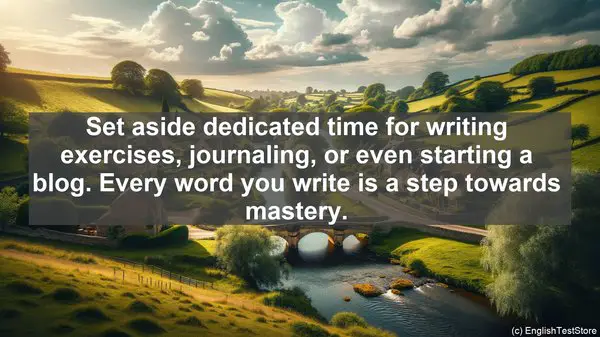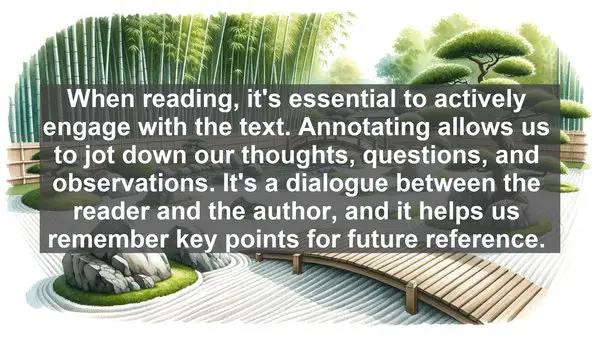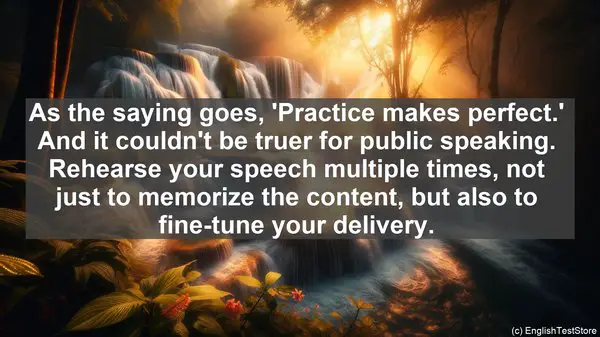Introduction: The Importance of Critical Reading
Welcome to today’s lesson where we’ll be discussing the top 10 techniques for advanced critical reading and text analysis. Now, you might wonder why critical reading is so important. Well, it’s not just about understanding the words on a page. It’s about engaging with the text, questioning its ideas, and forming your own opinions. This skill is crucial, not just for academic success, but also for being an informed citizen in today’s world. So, let’s dive in!
1. Active Reading: Annotating and Highlighting
When you’re reading a complex text, it’s easy to get lost in the words. That’s where active reading comes in. Instead of passively going through the text, actively engage with it. Annotate key points, underline important passages, and jot down your thoughts in the margins. This not only helps you remember the content better but also allows you to revisit and review the text with ease.
2. Contextualization: Understanding the Background
To truly grasp a text’s meaning, it’s essential to understand its context. This includes the historical, cultural, and social background. For example, if you’re reading a novel set in the 19th century, having knowledge about that era’s politics and society will give you a deeper understanding of the story. Contextualization also involves considering the author’s background and the text’s intended audience.
3. Close Reading: Analyzing the Language
Close reading is all about examining the text at a micro level. Look for patterns, repetitions, and metaphors. Pay attention to the author’s choice of words and sentence structure. This not only helps you understand the text’s literal meaning but also reveals its deeper layers of symbolism and thematic elements. Close reading is particularly useful for poetry and literary works.
4. Comparative Analysis: Making Connections
Texts don’t exist in isolation. They’re part of a larger literary or academic conversation. When analyzing a text, consider how it relates to other works in the same genre or field. Are there similar themes? Contrasting ideas? By making these connections, you not only gain a broader perspective but also contribute to the ongoing discourse in that area.
5. Questioning: Challenging the Text
Don’t be afraid to question the text. Is the argument logical? Are there any biases? By critically examining the text, you not only become a more discerning reader but also develop your own analytical skills. This is particularly important when reading non-fiction or persuasive texts, where the author’s agenda might influence the content.
6. Summarizing and Paraphrasing: Condensing the Content
Being able to summarize a text concisely is a valuable skill. It shows that you’ve understood the main points and can communicate them effectively. Paraphrasing, on the other hand, involves restating the text’s ideas in your own words. This not only helps with comprehension but also avoids plagiarism when using the text’s content in your own work.
7. Visualizing: Creating Mental Images
Sometimes, a text’s meaning can be better understood through visualization. As you read, try to create mental images of the scenes or concepts being described. This not only enhances your comprehension but also makes the reading experience more immersive and enjoyable. Visualizing is particularly useful for descriptive or narrative texts.
8. Active Listening: Engaging with Audiobooks or Lectures
Text analysis isn’t limited to just written material. With the rise of audiobooks and online lectures, active listening has become an important skill. Treat an audiobook or a lecture as you would a printed text. Take notes, pause and reflect, and ask questions. Active listening not only aids comprehension but also helps you retain the information better.
9. Research: Going Beyond the Text
Sometimes, a text might reference or allude to other sources. To fully understand the context or the argument, it’s important to do additional research. This could involve reading related articles, exploring primary sources, or even conducting interviews. By going beyond the text, you not only enrich your understanding but also contribute to the broader knowledge in that area.

10. Reflecting and Discussing: Sharing and Building Ideas
Finally, critical reading doesn’t end with just the text. It’s important to reflect on what you’ve read and engage in discussions with others. This could be through a book club, an online forum, or even a classroom setting. By sharing your ideas and listening to others’, you not only deepen your understanding but also gain new perspectives and insights.





















